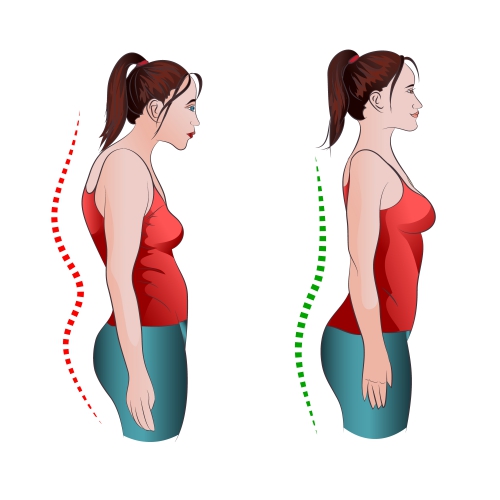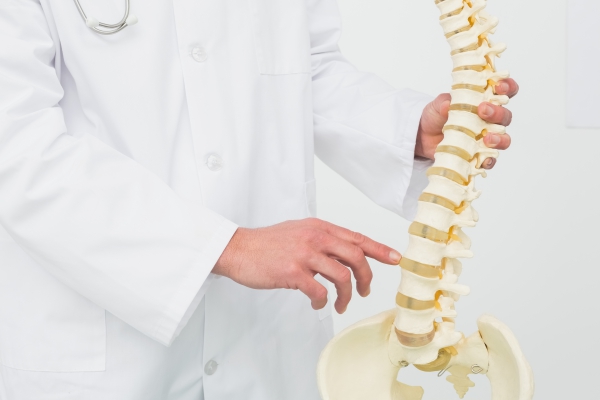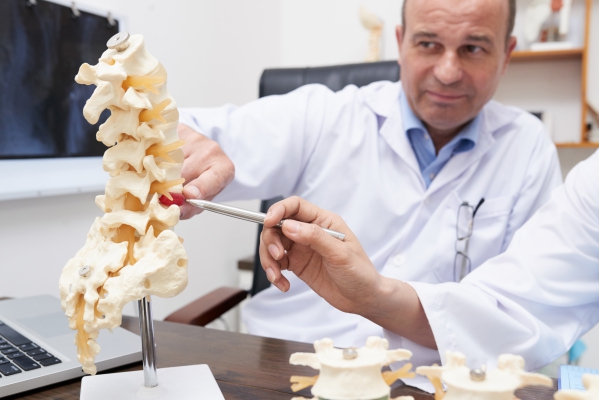What is scoliosis?
Scoliosis is a condition in which your spine curves sideways. This occurs mostly during the period of rapid growth before puberty. This condition is the most common type of deformity affecting the spine which orthopaedic surgeons need to confront. As the child continues to grow, the curvature increases which leads to signs and symptoms such as breathing difficulty and cosmetic problems. As the scoliosis gets worse, the spine not only curves sideways but also twists or rotates which causes the ribs to stick out even further.
Scoliosis is more common in children aged between 12-14 years. In addition, children born to mothers aged above 27 years tend to develop scoliosis more frequently. Furthermore, females are more at risk of developing scoliosis than males.
The treatment of scoliosis depends on the severity of the condition and the presence of debilitating symptoms. The treatment options include braces or surgery.
What are the causes of scoliosis?
Unfortunately, the exact cause of scoliosis is still unknown. However, several hypothesis have been suggested. One of the possible causes of this condition is a problem with your muscle located on your spine. It may also be a hereditary problem as this condition tends to run in families. Other possibilities include infections or injuries to your spine, abnormal development of your spine bones since birth, cerebral palsy or muscular dystrophy.

What are the risk factors of scoliosis?
There are some factors which may increase your risk of developing scoliosis and these include:
- Sex: Females are more at risk of developing scoliosis than females.
- Age: Scoliosis is more common in people aged between 12-14 years.
- Age of mother: Children born to mother aged above 27 years are more at risk of developing scoliosis.
- Obesity: Overweight or obese people are more at risk of developing scoliosis due to the excess pressure exerted on their spines.
What are the signs and symptoms of scoliosis?
The signs and symptoms of scoliosis depends on the severity of curvature of your spines and these include:
- Asymmetrical shoulders
- Uneven rib cage
- Asymmetrical waist
- Pain: Scoliosis is often not associated with pain. However, when it is present, more aggressive investigations are required. 23% of people affected by this condition may have back pain at the time of presentation.
Making a diagnosis
To make a diagnosis, your doctor will first take a detailed history from you to know more about your symptoms. After the history taking, your doctor will perform a thorough physical examination to look for signs of scoliosis. The reflexes and sensation of your lower limb will be tested as in severe scoliosis, these may be affected due to nerve compression at the level of the spine. Your doctor may order some tests to confirm the diagnosis and assess the severity of scoliosis, these include:

- Laboratory tests: These are done only to prepare you for surgery. The level of haemoglobin and haematocrit is tested. Also, a blood cross-match is done to determine your blood group so that blood is available if transfusion is required during or after surgery.
- Radiography: Several x-rays of your spine is taken to assess the severity of the condition. The severity is determine by measuring the Cobb angle- it is the measurement of the degree of side-to-side curvature of your spine. If the Cobb angle is more than 10 degrees, the diagnosis of scoliosis is made.
- Magnetic Resonance Imaging (MRI) scan: MRI scan are not routinely done in cases of scoliosis. It is only done is special cases where the person presents with headaches or ataxia- this is a degenerative disease of the nervous system which results in symptoms such as stumbling, falling, slurred speech and incoordination.
- Ultrasonography: This imaging technique is done in cases where ionising radiation are contraindicated.
- Pulmonary function test: This test is done to determine if the function of your lung is being affected by scoliosis.
What are the treatments of scoliosis?
Children with mild scoliosis often do not require treatment. However, they need to have regular check-ups with their orthopaedic surgeon. The decision to begin treatment depends on several factors and these include:

- Severity of scoliosis: The more severe the curve is, the more likely it is that the condition will worsen with time.
- Sex: Females are more at risk of having their scoliosis worsen with time than males.
- The pattern of the curve: S-shaped curves- also known as double curves- are more prone to worsen with time than C-shaped curves.
- Age: The risk of progression of this condition decreases when the child’s bones have stopped growing which is why braces are more useful in children whose bones are still growing.
- Location of the curve: Curves which are located in the centre section have more risk of progression than those located in the lower or upper sections of the spine.
The treatment of scoliosis mainly involves braces or surgery:
- Braces: This treatment option is useful in children whose bones are still growing. It mainly prevents the scoliosis to progress rather than to cure or reverse the condition. The Braces are often made of plastic which are worn under your clothes. It fits under the arm and around the hips, lower back and rib cage. The effectiveness of this treatment option increases with the amount of time it is worn. Braces are most often worn during the day to help them participate in most activities. Braces have few restrictions but may be taken off to participate in sports. The use of braces are stopped once the child’s bones have stopped growing which usually occurs 2 years after a girl have her periods, when daily shaving is necessary in boys and when your height does not change.
- Surgery: Surgery is considered in severe scoliosis. The surgical procedure is called spinal fusion which is a procedure during which your surgeon connects 2 or more vertebrae so that they cannot move independently. This is usually achieved by the use of metal rods, screws, wires or hooks. In cases where the child’s bones are still growing but the progression of the condition is very rapid, another surgical procedure may be done to prevent the progression of the condition. This surgery involves your surgeon placing a long metal rod to the top and bottom sections of the curvature which adjusts as the child grows. This metal rod is lengthened every 6 months. Unfortunately, there may be some complications associated with the surgical procedure and these include bleeding, non-union (when the bones do not heal or fuse together), pain, nerve damage or infection.

What are the complications of scoliosis?
If scoliosis is left untreated, the following complications may ensue:
- Cosmetic problems
- Severe chronic back pain
- Breathing difficulty
Prognosis
The prognosis of scoliosis depends on the severity of the curvature. Most people with scoliosis can live a normal life with the appropriate treatment. Seeking medical advice early is key to prevent the onset of complications and to prevent progression of this condition.

Source:
J. Alastair, I. and Simon, M., 2016. Davidson's Essentials of Medicine. 2nd ed. London: ELSEVIER.
Parveen, K. and Michael, C., 2017. Kumar & Clarks Clinical Medicine. 9th ed. The Netherlands: ELSEVIER.
Scherl, S., 2020. Adolescent Idiopathic Scoliosis: Clinical Features, Evaluation, And Diagnosis.
Mehlman, C., 2020. Idiopathic Scoliosis Treatment & Management: Approach Considerations, Treatment Indications, Medical Therapy.





